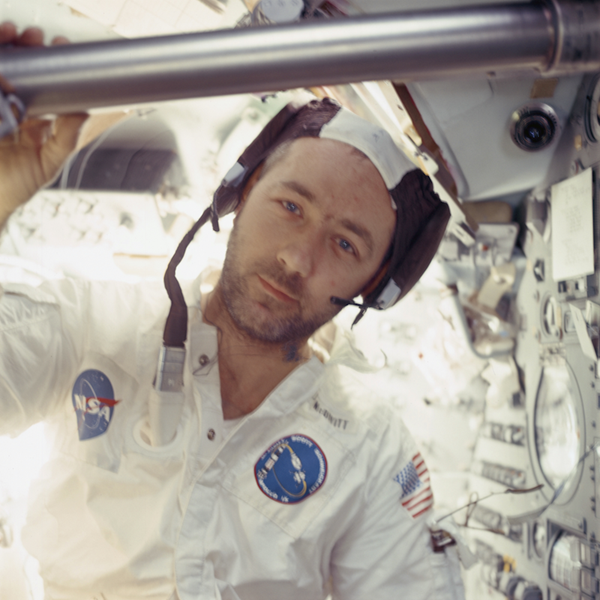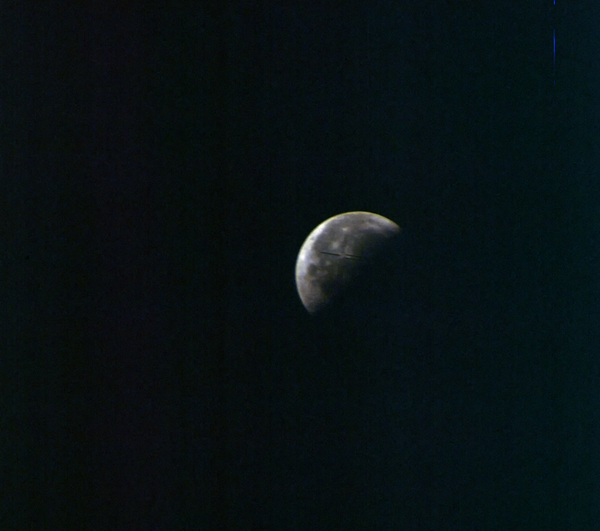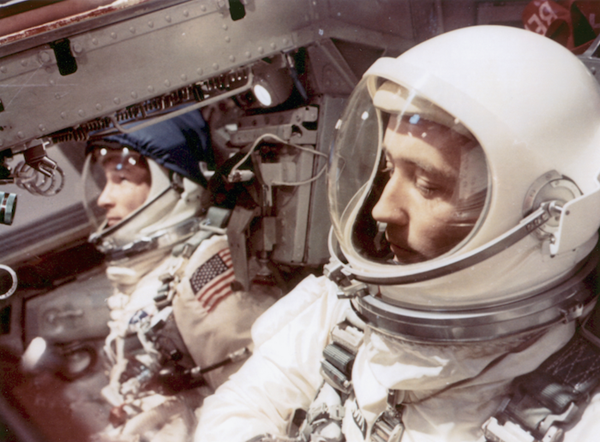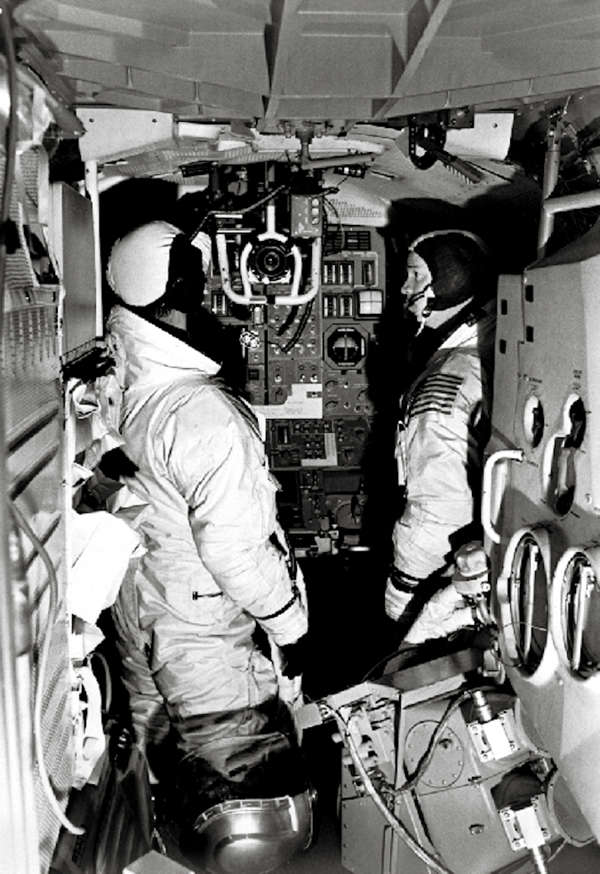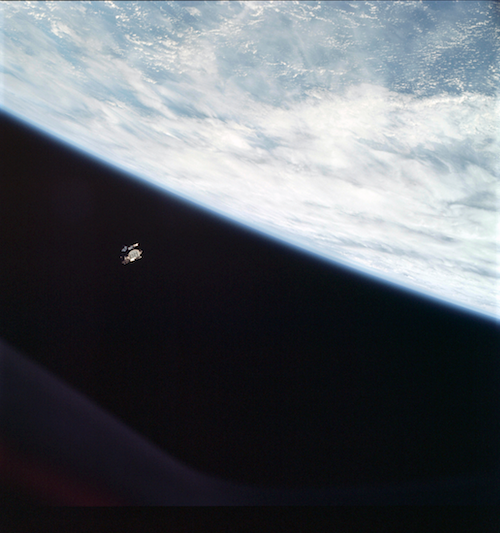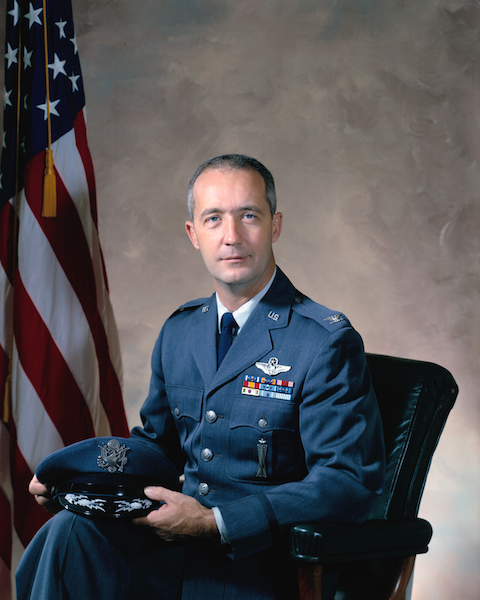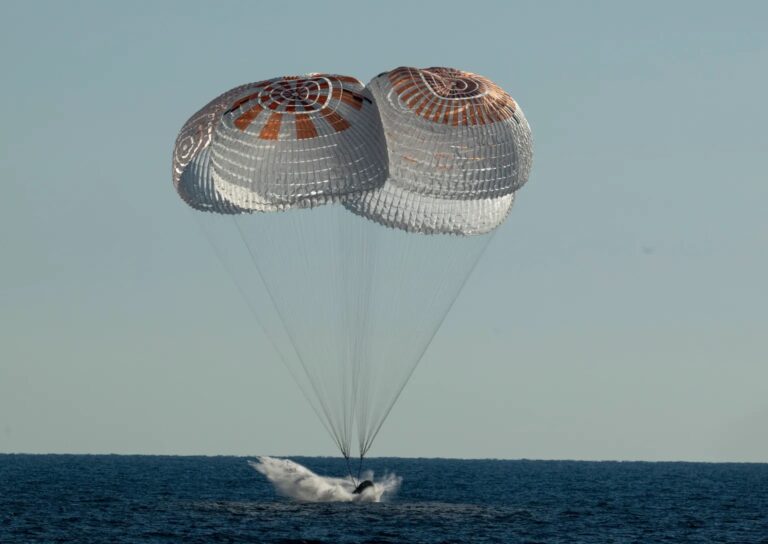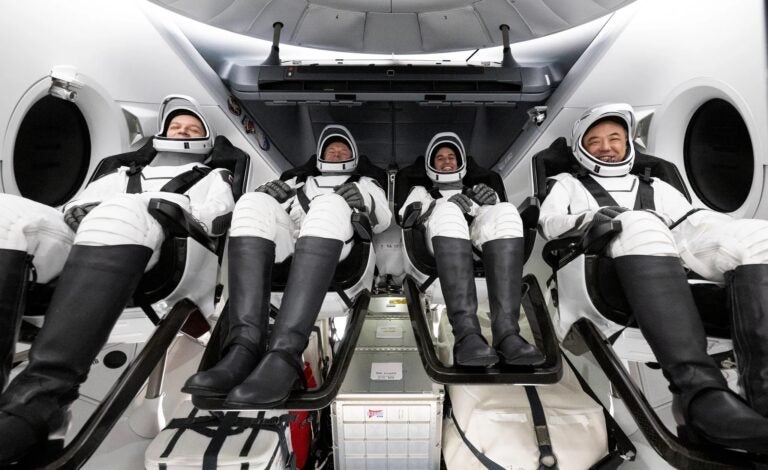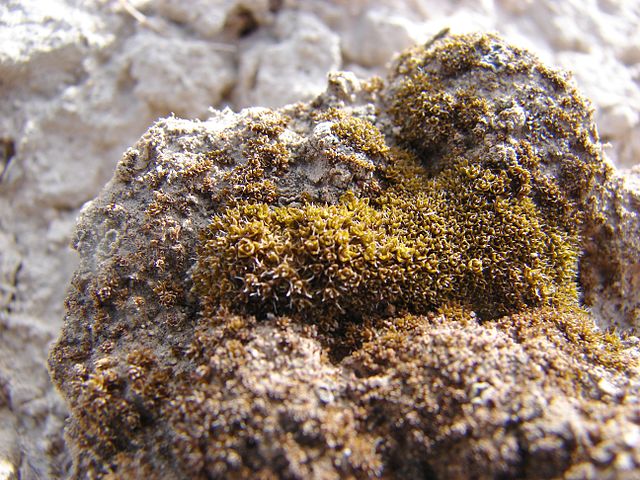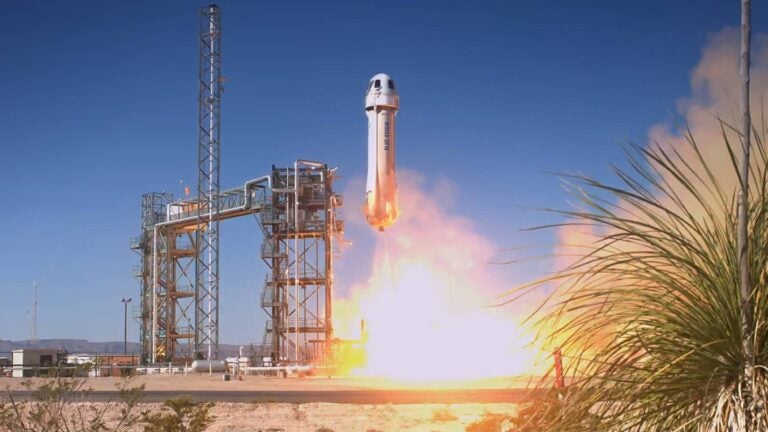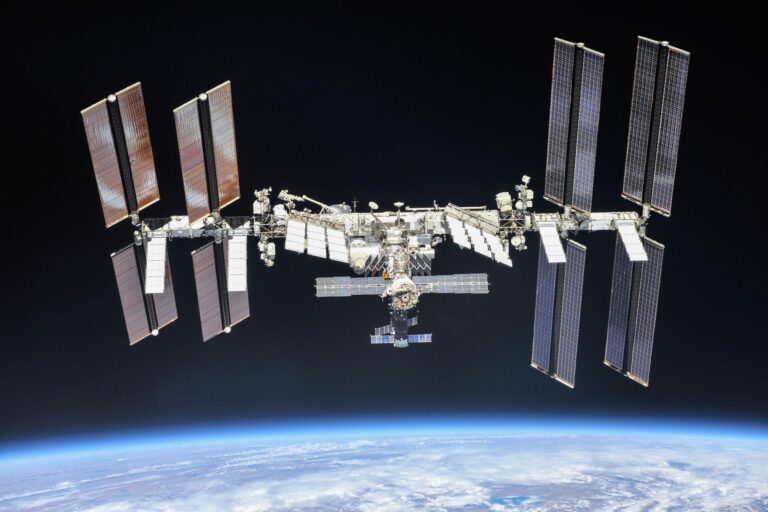Within three years, he would serve as command pilot on Gemini IV, spending four days in orbit with pilot Ed White. During that mission, White completed the first American spacewalk, just months after Russian cosmonauts had accomplished the same goal.
On March 3, 1969, McDivitt again launched into space — this time as commander — with fellow astronauts Russell “Rusty” Schweickart and David Scott. The trio spent 10 days orbiting Earth aboard Apollo 9. During those 10 days, the Apollo 9 crew rigorously tested everything on the spacecraft, which was designed to carry men safely to the Moon and back.
Apollo 9 was the first time the command module and lunar module flew together. It was the first time the two were docked in space and the first time the lunar module was tested as a stand-alone, self-sufficient craft.
“On Apollo 9, we did most of the engineering tests that were required. And then, as a result of that, we really had done just about everything you could do with the spacecraft,” says McDivitt. “The mission was to verify the two spacecraft together and the two spacecraft individually, which we did do.”
From Gemini to Apollo
McDivitt’s first spaceflight took place in the cramped seat of a two-man Gemini capsule. “The Gemini was very, very tight. It was extremely tight — you couldn’t stretch all the way out. You were in the seat, and that’s where you stayed,” he says. His was the second manned Gemini flight, following Gemini III, which had lasted just under five hours. Gemini IV drastically upped the ante, keeping McDivitt and White circling Earth for four days.
Apollo 9 lasted more than twice as long as Gemini IV, and the three-man crew enjoyed a relatively roomier home away from home. “In Apollo, we’d get up and float around, so it was much more comfortable. It was a much bigger spacecraft,” McDivitt says. The spacecraft was also “quite a lot more complicated,” he adds, as was the mission to test it.
“Gemini IV was a medical experiment. [No American] had been up in space for more than a day, and we were going up there for four days, and there was a lot of medical monitoring that happened with us. Apollo 9 was an engineering test flight, so we operated all the systems, checked everything out, and it was much more complicated.”
But one similarity — and strength — of the two programs, he says, was the control given to the astronauts, both on the ground and while in space. “The astronauts had input in all the things that we flew with or did things with. That was the difference between our space program and the Russians’. We involved the pilots in the design of things.” By contrast, the Russian missions relied much more heavily on automation, without many of the manual backup systems implemented by NASA to give the astronauts control if the automation failed. McDivitt says his crew was also included in the development of the lunar module: “We were the first guys flying it, and we had a lot of input on it,” he recalls.
Testing in orbit
Apollo 9 was the ultimate engineering test, designed to ensure every piece of the sophisticated multicomponent Apollo spacecraft could and would work under a variety of conditions, including those that might be unexpected or unwanted. Confirming that the command and lunar modules could be docked in space and operate smoothly, together and apart, was vital to the success of any attempted Moon landing.
While in orbit, “we tested everything there was to test on the lunar module, on the command module, and the two of them together,” McDivitt says. “So we did a lot of things that weren’t done any time later on, but we did them to make sure we could do them.”
The lunar module, he says, “flew the way it was supposed to.” He wasn’t concerned at all that the fragile, oddly designed craft — which he had described in newspaper interviews prior to the mission as “flimsy” and “a tissue paper spacecraft” — would work as it should. “I don’t worry much,” he says.
As commander and lunar module pilot, respectively, McDivitt and Schweickart spent several days conducting extensive tests using the lunar module, beginning on the third day of the mission. Over the next three days, the craft’s engines were fired several times to simulate landing on and ascending from the Moon’s surface. This included the first crewed throttling of a spacecraft engine, as McDivitt manually reduced the engine’s thrust for nearly a full minute before shutting it off in a mock landing burn. On the mission’s fifth day, McDivitt and Schweickart successfully separated the lunar module’s two stages to simulate liftoff from the Moon, as the craft was designed to leave its landing stage behind as its launch platform.
Even the two television transmissions the crew produced, on March 5 and 6, were part of the engineering test. “It was in the flight plan that we wanted to check out the TV camera, make sure it worked when we got to the Moon,” says McDivitt. Broadcasting live television from the Moon would become instrumental in captivating the public and sharing NASA’s success. But for McDivitt, testing this was “just another thing to do” on the mission’s long checklist.
Working from home
The Apollo 9 mission was McDivitt’s last as an astronaut — but not his final contribution to Apollo. In May 1969, McDivitt became manager of Lunar Landing Operations; three months later, he also became manager of the Apollo Spacecraft Program, remaining in that position for Apollo 12 through 16. As manager of Lunar Landing Operations, he says, he led the effort to plan and implement manned exploration of the lunar surface. “When I left the astronaut corps, we had not had a plan for exploring the Moon,” McDivitt says. “So I put together a team of guys, and we put together requirements for things that we would need to do a better exploration of the Moon, and then sort of planned out some of the initial places we would go and what we would do. And out of that came the lunar rover, longer-duration spacecraft on the surface of the Moon, and a lot of things like that.”
Along the way, his team continued to invite input from the astronauts who would be using the methods and technology the team designed on the Moon. And, just as important, “Apollo had the backing of the American people,” says McDivitt. “And so it was fully funded. During the time that I ran the program, I didn’t have any need for extra money. The money that was allocated was sufficient to do the program.”
Looking back
Apollo 16 marked McDivitt’s final mission with NASA. “I had left the program before Apollo 17, and I was in the industrial world by then. I was just a spectator” for the final Moon landing, he says.
Ultimately, “I spent 10 years with NASA, but I did a lot of other stuff, too,” the 89-year-old says. “I was an Air Force general, and I got out and I was in the business world for almost 25 years. So that was not the only thing I did in my life.” Nonetheless, he has been recognized for his accomplishments in human spaceflight, including two NASA Distinguished Service Medals, a NASA Exceptional Service Medal, and induction into the Aerospace Walk of Honor in Lancaster City, California.
The success of Apollo 9 was crucial. It was expected, given the crew’s intense training and the skill behind the crafts’ design and construction, but by no means guaranteed. Once the Apollo spacecraft had been tested and proven in space, the program advanced, quickly nearing its final goal of landing men on the Moon.

